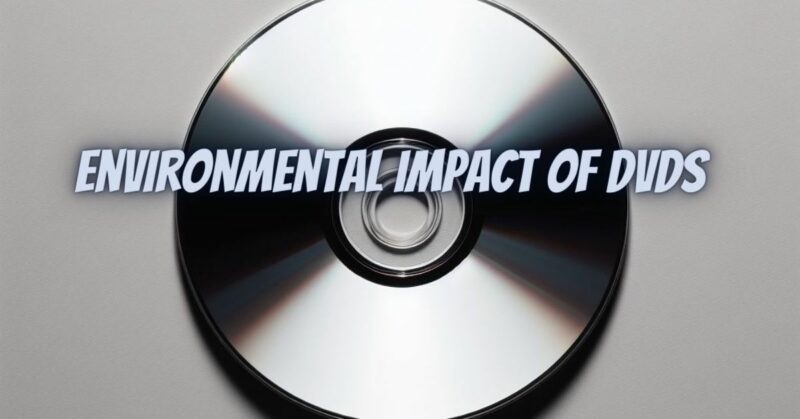Digital Versatile Discs (DVDs) have been a popular medium for storing and distributing video and audio content for decades. However, as concerns about environmental sustainability continue to grow, questions have arisen regarding the environmental impact of DVDs. In this comprehensive article, we will delve into the environmental considerations associated with DVDs, exploring their life cycle, production, waste, and potential mitigations to reduce their environmental footprint.
The Life Cycle of DVDs
Understanding the environmental impact of DVDs requires examining their entire life cycle, from production to disposal:
- Production: DVD production involves the extraction of raw materials, such as polycarbonate plastic and aluminum, and the manufacturing of optical discs. This process consumes energy, water, and resources.
- Distribution: DVDs are typically manufactured in one location and then distributed worldwide. The transportation of DVDs over long distances contributes to their carbon footprint.
- Use: During their use phase, DVDs have minimal environmental impact, as they do not consume additional resources or energy when played. However, the energy used by DVD players and computers to read and display the content should be considered.
- Disposal: At the end of their life cycle, DVDs can become electronic waste (e-waste) if not properly managed. E-waste contains hazardous materials, such as heavy metals and plastics, which can pose environmental and health risks if not disposed of correctly.
Environmental Concerns Associated with DVDs
Several environmental concerns are associated with DVDs:
- Resource Extraction: The production of DVDs requires the extraction of raw materials, including petroleum-based plastics and metals. Mining and processing these materials can lead to habitat disruption and resource depletion.
- Energy Consumption: DVD manufacturing, transportation, and use contribute to energy consumption and greenhouse gas emissions. The energy used during the production phase, including molding the polycarbonate disc and printing packaging, can be substantial.
- Packaging: DVDs are often packaged in plastic cases, which contribute to plastic waste pollution. The production and disposal of DVD cases can have significant environmental impacts.
- E-Waste: Improper disposal of DVDs can lead to e-waste, a growing environmental problem. E-waste poses risks to ecosystems and human health when not managed responsibly.
Mitigations and Environmental Considerations
To mitigate the environmental impact of DVDs and make more sustainable choices, consider the following:
- Digital Alternatives: Embrace digital distribution methods, such as streaming and downloading, which eliminate the need for physical discs altogether.
- DVD Recycling: If disposing of DVDs, explore recycling options available in your area. Recycling can recover valuable materials like aluminum.
- Minimal Packaging: Look for DVDs with minimal packaging or choose eco-friendly packaging options.
- Energy Efficiency: When using DVD players or computers, opt for energy-efficient models to reduce energy consumption during playback.
- Secondhand and Rental: Consider buying secondhand DVDs or renting rather than purchasing new ones, extending the life cycle of existing discs.
The environmental impact of DVDs spans their entire life cycle, from production to disposal. While DVDs have contributed to the entertainment industry and remain a popular format, it is essential to consider their environmental implications. Consumers can make more sustainable choices by embracing digital alternatives, recycling, and minimizing waste. Ultimately, striking a balance between entertainment and environmental responsibility is crucial as we navigate the evolving landscape of media consumption in an increasingly eco-conscious world.

